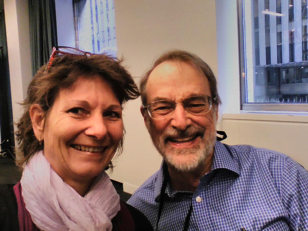Organizational Open Space for Unleashing Innovation | Agile Alliance

Today’s pressure on companies from volatility, uncertainty, complexity, and ambiguity (VUCA) as well as digitalization requires them to be innovative at all times. Companies typically respond by organizing Design Thinking sessions, inviting employees to various think tanks, providing space for start-ups, etc. Yet these approaches are only single sparks in time, invite only a predefined set of people, and proceed from the assumption that management is responsible for inducing innovation. They jump to the demands of VUCA and digitalization rather than boldly leveraging VUCA and digitalization.
 These methods often miss the innovative power of the whole staff. All too often people get hired if they look like a good match for a predefined job description and are then expected to fulfill that job. From the employee’s viewpoint, he or she looks at the job description and thinks, “I’m a good match and now I know what I am supposed to do.” Yet every individual has more to offer than defined in a job description. So if their first priority is always to fulfill the expectations of that “job box”, the individual’s potential outside that box goes to waste. While few managers would likely dispute that the key to leveraging VUCA is leveraging every individual’s innovative potential, the reality is that managers don’t have the capacity to think about each individual’s skill set and design a way to use those skill sets effectively. Stacking and rearranging “job description boxes” is a lot easier than accounting for the individuals occupying those boxes. A question then is how can a company gain the capacity to “leverage VUCA by considering every individual’s innovative potential”?
These methods often miss the innovative power of the whole staff. All too often people get hired if they look like a good match for a predefined job description and are then expected to fulfill that job. From the employee’s viewpoint, he or she looks at the job description and thinks, “I’m a good match and now I know what I am supposed to do.” Yet every individual has more to offer than defined in a job description. So if their first priority is always to fulfill the expectations of that “job box”, the individual’s potential outside that box goes to waste. While few managers would likely dispute that the key to leveraging VUCA is leveraging every individual’s innovative potential, the reality is that managers don’t have the capacity to think about each individual’s skill set and design a way to use those skill sets effectively. Stacking and rearranging “job description boxes” is a lot easier than accounting for the individuals occupying those boxes. A question then is how can a company gain the capacity to “leverage VUCA by considering every individual’s innovative potential”?
There is a known facilitation technique for achieving this increase in capacity. Called Open Space (or to be precise Open Space Technology – see Owen and the principles listed in the Appendix below), it has proven successful in mobilizing everyone’s innovative thinking during a one-time event. Many conferences or rather Unconferences use this power by saying: “do not to limit yourself by a predefined program, but to use all possible ideas of the people who are present to discuss (and solve) the issues that are present with the people.” So Open Space invites everyone to bring their full potential (and not only the expertise that goes with a predefined concept) to this one-time event, quite outside of their job descriptions.
Ensuring that a company can benefit from individuals bringing their full potential not only during a one-time event but in their daily work requires a different application of Open Space principles called “Organizational Open Space”. The primary change is that in an event, the “space is opened” at the beginning of the event and closed at the end. With Organizational Open Space (as it has been introduced by BOSSA nova, see Eckstein & Buck), the space is always open.
For example, video game developer Valve Corporation invites staff to suggest ideas about a new game or improvements to existing games whenever the idea occurs to them during the work week. If there are any colleagues who believe in this new idea, they will join together to make it happen. Another example: at W.L. Gore (the outdoor equipper) everyone is invited constantly to suggest a new product, a new feature, or maybe even a new process. In both cases, if enough staff are interested in implementing this product, feature, or process, that interested group will pursue it. If there is not enough interest for the idea, the idea dies because the missing passion signals that it is probably not worth implementing. The opposite is also possible: if staff tires of an activity, they can stop doing it so long as they take care of existing customers.
Note that passion in Organizational Open Space is always bounded by responsibility. You don’t suddenly drop a product line and leave loyal customers stranded or you don’t start working on a product that goes against the company’s ethical values. “Passion bounded by responsibility” allows a company to leverage the innovative power of each employee.
Organizational Open Space can be implemented in small steps, for example:
When fully implemented, Organizational Open Space is not tied to special events. It is an organizational strategy (or, if you will, an organizational mindset or attitude to innovation).
Note that, there are a number of techniques with jargon that can be confusing. They sound similar to each other but are quite different. For example, the following shouldn’t be confused with Organizational Open Space:
In summary, Organizational Open Space is not about facilitating a meeting but about using Open Space principles in an organization. As Open Space uses these principles for facilitating an event, Organizational Open Space uses these principles as a strategy to leverage the innovative potential of everyone working for the organization.
When deciding to “leave the space open at all times”, you’re entering an advanced management approach that expands the responsibility for managing innovation to all employees. Innovation no longer relies solely on assignments via job descriptions, or a few “innovative” people (like the R&D department) or on specific events like think tanks. Innovation happens all the time by everyone.
Eckstein, J. & Buck, J: Company-wide Agility with Beyond Budgeting, Open Space & Sociocracy: Survive & Thrive on Disruption. CreateSpace. 2018.
Mamoli, S. & Mole, D.: Creating Great Teams: How Self-Selection Lets People Excel. Pragmatic Bookshelf. 2015.
Mezick, D. et.al: The Open Space Agility Handbook. Freestanding Press. 2015.
Owen, H.: Open Space Technology. A User’s Guide. Berrett-Koehler Publishers. 2008, 3rd ed.
From Wikipedia on Open Space: https://en.wikipedia.org/wiki/Open_Space_Technology
In addition to these five principles there is a law available, called the “Law of Two Feet”: If at any time during our time together you find yourself in any situation where you are neither learning nor contributing, use your two feet to go someplace else.

– Company-wide Agility with Beyond Budgeting, Open Space & Sociocracy (with John Buck), see https://www.agilebossanova.com/
– Diving for Hidden Treasures: Uncovering the Cost of Delay in your Project Portfolio’ (with Johanna Rothman)
– Agile Software Development in the Large’
– Agile Software Development with Distributed Teams’
– Retrospectives for Organizational Change
She is a member of the Agile Alliance (having served the board of directors from 2003-2007) and a member of the program committee of many different American, Asian, and European conferences, where she has also presented her work.
Jutta holds a M.A. in Business Coaching & Change Management, a Dipl.Eng. in Product-Engineering, and a B.A. in Education.
This is an Agile Alliance community blog post. Opinions represented
are personal and belong solely to the author. They do not represent opinion or policy of Agile Alliance.
